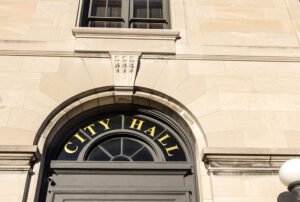
December 2, 2018; Crain’s Cleveland Business and Plain Dealer
Unhappy with a struggling regional economy, a group of Cleveland leaders wants to build a community-wide, inclusive community development process and strategy that can succeed where others have failed.
According to Peter Krouse, writing for Cleveland.com, the as-yet-unnamed group sees inclusivity as a key to “improving the region’s economic future…an opportunity to aspire to something greater, rather than just solving problems as they come along.” But are their good intentions doomed by their inability to recognize the implicit biases and power structures that are limiting their efforts?
This large problem they’re taking on affects many struggling households. The Cleveland metropolitan area, typical of many Rust Belt cities, has lagged as the nation’s economy has grown. In June, Business Insider ranked it last among the nation’s 40 largest urban areas: “Cleveland had the highest…unemployment rate of 5.7 percent…the city’s job growth was the second-lowest, with non-farm payroll employment rising just 0.3 percent between February 2016 and February 2017.”
The call to action for this new effort was a speech attorney Jon Pinney delivered at the City Club of Cleveland, entitled, “Dead Last: Northeast Ohio’s Economy is Lagging and It’s Time to Do Something About It.” From that speech:
That is why the system needs to be realigned. We need to put the whole system through a comprehensive alignment and vision process to form an ecosystem. We need to study other models, bring in smart people from out of town to help us figure this out. Not every system will be the same, but it is time we recognize we need help. We need to build an optimal model.
After the process is complete, we need to hold a summit so we can tell the community what the plan is. We should give it a name and get behind one plan, and if there is more than one plan, we should understand why. We need to get behind something and understand our vision going forward. This effort should be inclusive, with new innovative ideas and players.
Sign up for our free newsletters
Subscribe to NPQ's newsletters to have our top stories delivered directly to your inbox.
By signing up, you agree to our privacy policy and terms of use, and to receive messages from NPQ and our partners.
It starts with the leaders of all leading economic development organizations coming together. That type of meeting has not occurred, as far as I can tell, in probably five or 10 years. It is time for all of them to figure it out, get in a room, and start to build a plan.
Emerging from this challenge, a group of 15 self-selected leaders formed and developed an approach to the inclusive process Pinney envisioned. In a press release, the organizers said that they were inviting a larger working group of about 55 invited participants to meet and, using appreciative inquiry methodologies, “determine how to best mobilize the community to collective action toward the desired future.”
While for some this was exciting news, it also reflects how the existing power structure continues to control and exclude the diversity of the community they desire to include. Elizabeth McIntyre, writing for Crain’s Cleveland Business, points out that inclusion isn’t something that could be addressed down the road. “You can’t throw around words like ‘inclusion’ if you aren’t holding yourself to that very standard—and the best place to start is by looking at who is, and who isn’t, seated at the table with you. This very issue was brought up in the first question asked of Pinney during his City Club speech, in which he named eight people he thought could lead the effort. The questioner pointed out all the people he named were white men.”
Attorney Rebecca Maurer, writing for Crain’s, notes that the planning meeting’s 55 attendees came from “the Cleveland Leadership Center’s program graduates, recent Crain’s Cleveland Business “40 Under 40” honorees, the networks of those who have helped develop the effort, and the networks of their networks, as well as ‘outspoken’ individuals in local news media.” Missing were the voices of normal people and those without connections to power.
Mauer sees in this an indication that the organizers don’t fully understand what inclusion means.
The organizers of this [design session] have failed to create a transparent and inclusive process. The group claims to have invited a broad set of community members to this crucial conversation. In fact, a private invitation went out to only a few dozen well-connected people. Since the invite list is secret, we have no idea if Cleveland will be well-represented in its true diversity or breadth of experience. We suspect not…this [appreciative inquiry design session] is going to set the tone for the entire planning process. If they only start thinking about inclusion and equity after the planning has taken place, it’s too late.
The intention of those launching this new process may be quite noble. But if they want to break with the biases of the past, they will need to go much further. Before they define the problems, select planning methodologies and locations for meetings…before they begin thinking about solutions, they need to break down the walls and invite diversity in. Inclusivity is about gender, race, and economic status. It is also about power and powerlessness. Without breaking away from the comfort of those already in the conversation to invite new voices into the dialogue, they risk missing key perspectives critical in laying a successful path forward.—Martin Levine












